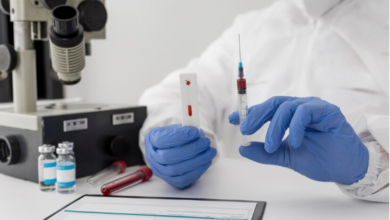All You Need to Know About Reverse Osmosis Systems

Reverse Osmosis (RO) has been considered as one of the top water filtration methods that helps in water reclamation, recycling and reuse. The use of RO systems are observed in a variety of applications that includes wastewater, feed water production and more. RO technology’s capability of treating almost any kind of water makes it an ideal treatment procedure.
The RO systems are an effective source of meeting the growing demands of purified and treated water. The efficiency of RO systems depends not just upon the quality of sea water membranes selected but also relies on various other factors such as RO system design, membrane cleaning, maintenance and more.
At Dutco Tennant LLC, we supply a high-quality range of RO membrane solutions that meet the demands of water treatment projects. If you are interested to know more about them than make sure to visit our exhibit at WETEX 2022. A three day event which will begin from 27th September and conclude on 29th September 2022.
But before you wait till the event, how about you learn a bit more about Reverse Osmosis systems. Continue to read till the end to find out more.
Reverse Osmosis Technology
Let us start with the basics of reverse osmosis systems by understanding the reverse osmosis technology. Reverse osmosis allows removal of contaminants that are present in feed water or unfiltered water as the water is pressure forced through a series of semipermeable membranes.
In RO systems, water tends to flow from the more concentrated (high contaminants) side of the membrane to reduced concentrated side (fewer contaminants) to deliver clean drinking water. The clean water production is referred to as permeate and the concentrated water remaining is known as the waste or brine.
The semipermeable membrane used for RO systems has small pores that operate for blocking the contaminants but allows the passage of water molecules through it.
But in reverse osmosis technology, the membranes are able to obstruct the contaminants from entering into the less concentrated side of the membrane. The result is on the other side of the membrane, there is only clean water with the contaminants remaining on the opposite side of the membrane.
The Work Mechanism of Reverse Osmosis System
In the reverse osmosis system, the removal of sediment and chlorine from water is carried out beforehand with the pretreatment process. Then the pretreated water is pressure forced through the semipermeable membrane for removing the dissolved solids.
After exiting from the RO membrane, the water flows through a postfilter procedure to polish the treated water prior to its entrance into the dedicated transmission system. Depending on the number of pre filters and postfilters used, the reverse osmosis systems vary and include different stages.
Different Stages of RO Systems
The RO membrane is the crucial element in a reverse osmosis system, however, the system also tends to consist of other filtration and ensure high-efficiency production of clean water. Generally, RO systems have 3, 4 or up to 5 stages of filtration.
In every reverse osmosis water system, the existence of carbon and sediment filters is necessary in addition to the RO membrane. These filters are referred to as pre filters or postfilters based on the water passage.
Each type of RO system includes one or multiple types of filter from the following –
- Sediment filter – minimizes the presence of particles such as dust, dirt and rust from water.
- Carbon filter – minimizes chlorine, volatile organic compounds (VOCs) and other contaminants which gives water foul odor or taste.
- Semi-permeable membranes – designed to remove up to 98% of total dissolved solids (TDS).
When the water enters into the RO system first, it tends to go through the prefiltration process. Prefiltration stage generally includes the carbon filter and sediment filter to eliminate the sediments and chlorine present in the water and have the tendency of clogging or damaging the RO membrane.
Next stage involves water entering through the RO membrane where dissolved particles of water, even the ones that are too small to observe with an electronic microscope, are removed.
Once this is done, the water enters the storage water tank where the water is contained until it is needed. A reverse osmosis system keeps on filtering the water until the water storage tank is full and after that the filtration stops.
Once the faucet or valve is turned on, water leaves the storage tank and passes through the postfilters for polishing the drinking water. These are the key stages that are typically found in most RO systems.
Conclusion
If you are interested to learn more about RO systems and sea water membranes then make sure to pay a visit to the Dutco Tennant LLC exhibit at WETEX 2022 which will commence from 27th September 2022. Our expert representatives will give you live product demos, insightful ideas and more.




